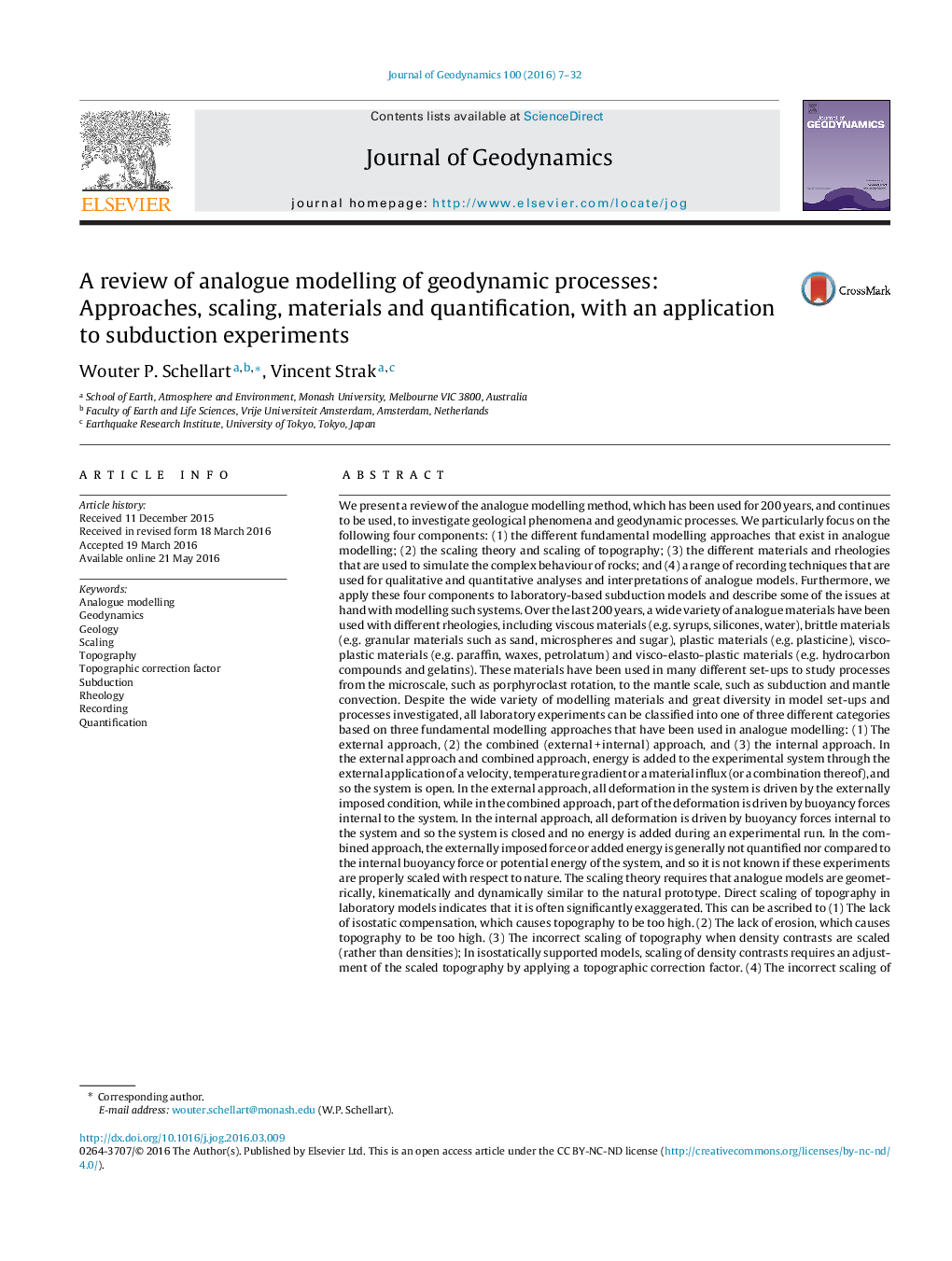| کد مقاله | کد نشریه | سال انتشار | مقاله انگلیسی | نسخه تمام متن |
|---|---|---|---|---|
| 6433065 | 1635750 | 2016 | 26 صفحه PDF | دانلود رایگان |
- Three analogue modelling approaches exist: Internal, external and combined approach.
- For the combined approach, imposed force needs to be quantified and scaled.
- Topography in many analogue models is too high, with several possible explanations.
- A topographic correction factor should be applied to models scaling density contrasts.
- Lab models use 3 set-ups to approximate Earth's horizontal rheological layering.
We present a review of the analogue modelling method, which has been used for 200 years, and continues to be used, to investigate geological phenomena and geodynamic processes. We particularly focus on the following four components: (1) the different fundamental modelling approaches that exist in analogue modelling; (2) the scaling theory and scaling of topography; (3) the different materials and rheologies that are used to simulate the complex behaviour of rocks; and (4) a range of recording techniques that are used for qualitative and quantitative analyses and interpretations of analogue models. Furthermore, we apply these four components to laboratory-based subduction models and describe some of the issues at hand with modelling such systems. Over the last 200 years, a wide variety of analogue materials have been used with different rheologies, including viscous materials (e.g. syrups, silicones, water), brittle materials (e.g. granular materials such as sand, microspheres and sugar), plastic materials (e.g. plasticine), visco-plastic materials (e.g. paraffin, waxes, petrolatum) and visco-elasto-plastic materials (e.g. hydrocarbon compounds and gelatins). These materials have been used in many different set-ups to study processes from the microscale, such as porphyroclast rotation, to the mantle scale, such as subduction and mantle convection. Despite the wide variety of modelling materials and great diversity in model set-ups and processes investigated, all laboratory experiments can be classified into one of three different categories based on three fundamental modelling approaches that have been used in analogue modelling: (1) The external approach, (2) the combined (external + internal) approach, and (3) the internal approach. In the external approach and combined approach, energy is added to the experimental system through the external application of a velocity, temperature gradient or a material influx (or a combination thereof), and so the system is open. In the external approach, all deformation in the system is driven by the externally imposed condition, while in the combined approach, part of the deformation is driven by buoyancy forces internal to the system. In the internal approach, all deformation is driven by buoyancy forces internal to the system and so the system is closed and no energy is added during an experimental run. In the combined approach, the externally imposed force or added energy is generally not quantified nor compared to the internal buoyancy force or potential energy of the system, and so it is not known if these experiments are properly scaled with respect to nature. The scaling theory requires that analogue models are geometrically, kinematically and dynamically similar to the natural prototype. Direct scaling of topography in laboratory models indicates that it is often significantly exaggerated. This can be ascribed to (1) The lack of isostatic compensation, which causes topography to be too high. (2) The lack of erosion, which causes topography to be too high. (3) The incorrect scaling of topography when density contrasts are scaled (rather than densities); In isostatically supported models, scaling of density contrasts requires an adjustment of the scaled topography by applying a topographic correction factor. (4) The incorrect scaling of externally imposed boundary conditions in isostatically supported experiments using the combined approach; When externally imposed forces are too high, this creates topography that is too high. Other processes that also affect surface topography in laboratory models but not in nature (or only in a negligible way) include surface tension (for models using fluids) and shear zone dilatation (for models using granular material), but these will generally only affect the model surface topography on relatively short horizontal length scales of the order of several mm across material boundaries and shear zones, respectively.
Journal: Journal of Geodynamics - Volume 100, October 2016, Pages 7-32
